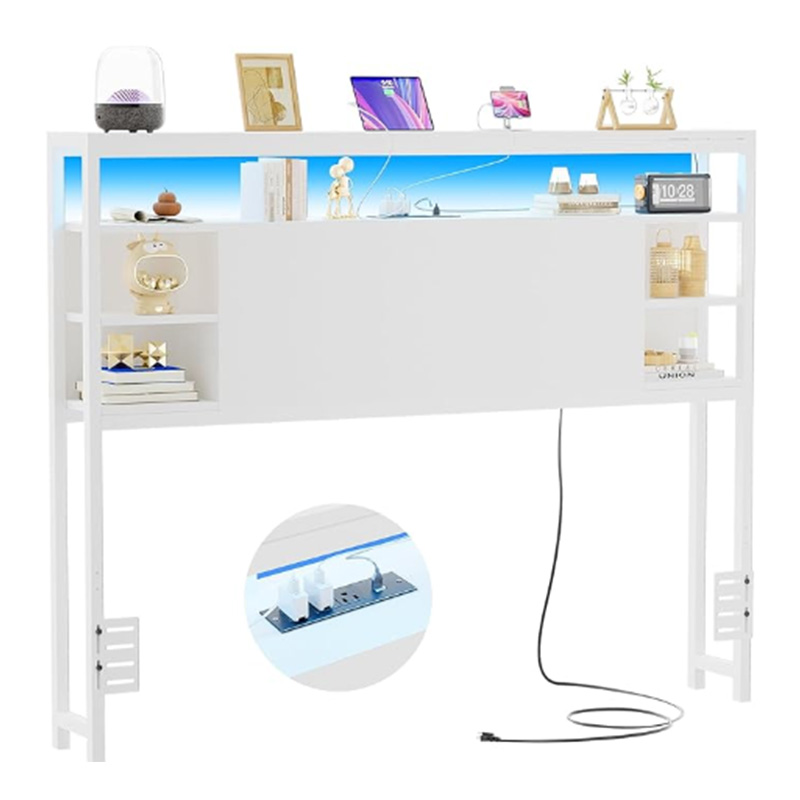How Much Headboard Should Show
As a manufacturer specializing in Storage Headboards, we understand that achieving the ideal balance between functionality and aesthetics is essential. The question of how much headboard should show above the mattress is not merely a matter of preference but involves practical considerations of design, proportion, and utility. This article provides clear, professional guidance to help you optimize your bedroom layout.
The Standard Guidelines for Headboard Height
Industry standards and interior design principles offer reliable benchmarks for headboard visibility. The typical recommendation is that 6 to 12 inches of the headboard should be visible above the mattress. This range ensures the headboard serves as a visual anchor without overwhelming the space. Several factors influence this measurement:
Mattress Depth: Modern mattresses, especially those with pillow tops or high-profile designs, can be 12 to 16 inches thick. For a mattress 16 inches thick, a headboard should extend至少 6 to 8 inches above the mattress surface to maintain visual presence.
Ceiling Height: In rooms with standard ceiling heights (8 to 9 feet), a headboard showing 8 to 10 inches creates harmony. For higher ceilings (10 feet or more), 12 inches or more may be appropriate to maintain proportion.
Functional Use: As storage headboards often include shelving or compartments, the visible portion must allow easy access to stored items without straining. Ensuring 8 to 10 inches of clearance above the mattress facilitates practical use.
Design and Proportional Considerations
1. Bed Size and Room Scale:
For king or queen beds in large rooms, a headboard showing 10 to 12 inches reinforces the bed as a focal point.
For full or twin beds in smaller rooms, 6 to 8 inches may suffice to avoid dominating the space.
2. Headboard Style:
Low-profile designs may require less visibility (6-8 inches) to maintain a streamlined look.
Taller or articulated designs can show 10-12 inches to emphasize their structure and storage features.
3. Visual Balance: The headboard should align with other elements in the room, such as Nightstands or wall art. Ideally, the top of the headboard should not exceed the midpoint of the wall height to prevent a cramped appearance.
Practical Implications for Storage Headboards
Storage headboards integrate functionality with form, making proportional visibility critical for usability:
Accessibility: Shelves or compartments must be within easy reach. Ensuring the headboard extends sufficiently above the mattress (typically 8+ inches) allows users to access stored items without interference from pillows or bedding.
Safety and Comfort: Adequate height prevents pillows from obscuring storage areas or accidentally dislodging items. It also provides a comforTable backrest for sitting up in bed.
Aesthetic Integration: The headboard should complement the Bed Frame and mattress. For a cohesive look, match the headboard’s exposed height to the bed’s overall dimensions and the room’s style.
How to Achieve the Optimal Look
Measure Before Purchasing: Note your mattress height and ceiling dimensions. Use the formula: *Headboard visible height = Mattress height + 6 to 12 inches*.
Consider Adjustability: Some storage headboards offer modular designs or adjustable mounts, allowing you to fine-tune the height during installation.
Prioritize Function: If frequently using storage features, err toward the higher end of the visibility range (10-12 inches) to ensure convenience.
Conclusion
The ideal amount of headboard visibility hinges on mattress depth, room proportions, and functional needs. For most storage headboards, 8 to 10 inches of exposure above the mattress strikes the best balance between aesthetic appeal and practicality. This ensures the design enhances the room while providing full access to storage features. As manufacturers, we engineer our headboards to meet these standards, delivering reliability and style tailored to modern living spaces. Explore our range to find designs that optimize both form and function.


